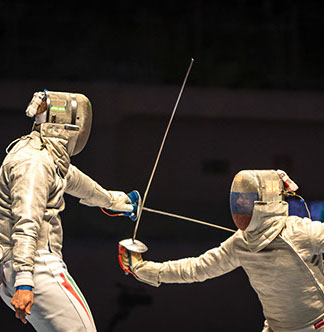GREGORY BERNS M.D. / Ph.D.
Decision-Making

For decades, neuroscientists, psychologists, and economists have studied human decision making from different perspectives. Although each has approached the problem with different theories and techniques, the basic question is common to many fields: why do humans make the choices that they do? And, given that humans sometimes exercise poor judgment in their decisions, what can we do about it?
Economists have developed simple theories of decision-making, for example, that are used to understand the movement of asset prices in markets. The basic theory says that people make decisions in such a way as to achieve outcomes that maximize their benefit. Although more mathematically precise, it has much in common with psychological theories that say that people tend to maximize pleasure and minimize pain. Although these theories describe basic tendencies of all animals, they often fail to account for decisions in common circumstances. For example, when individuals must make decisions in which an immediate benefit must be weighed against long-term consequences, they usually choose immediate gratification. Diet and preventive health care often fall prey to this temporal myopia. So do retirement savings.
The idea behind neuroeconomics is simple. The brain is responsible for carrying out all of the decisions that humans make, but because it is a biophysical system that evolved to perform specific functions, understanding these physical constraints may help explain why people often fail to make good decisions.
PUBLICATIONS
- Pincus M, LaViers L, Prietula MJ, Berns G: The conforming brain and deontological resolve. PLoS ONE, 9(8):e106061, 2014.
- Ekins WG, Brooks AM, Berns GS: The neural correlates of contractual risk and penalty framing. J. Risk & Uncertainty, 49:125-140, 2014.
- Barton J, Berns GS, Brooks AM: The neuroscience behind the stock market's reaction to corporate earnings news. The Accounting Review, 89:1945-1977
- Berns GS, Brooks AM, Spivak M: Scent of the familiar: an fMRI study of canine brain responses to familiar and unfamiliar human and dog odors. Behavioural Processes, 2014.
- Engelmann JB, Moore S, Capra CM, Berns GS: Differential neurobiological effects of expert advice on risky choice in adolescents and adults. Soc Cogn Affect Neurosci, 7:557-567, 2012.
- Berns GS, Bell E, Capra CM, Prietula MJ, Moore S, Anderson B, Ginges J, Atran S: The price of your soul: neural evidence for the non-utilitarian representation of sacred values. Phil. Trans. Royal Soc. B, 367:754-762, 2012.
- Brooks AM, Capra CM, Berns GS: Neural insensitivity to upticks in value is associated with the disposition effect. Neuroimage, 59:4086-4093, 2012.
- Berns GS and Bell E: Striatal topography of probability and magnitude information for decisions under uncertainty. Neuroimage, 59:3166-3172, 2012.
- Berns GS, Moore S, Capra CM: Adolescent engagement in dangerous behaviors is associated with increased white matter maturity of frontal cortex. PLoS One 4(8):e6773, 2009.
- Engelmann JB, Capra CM, Noussair C, Berns GS: Expert financial advice neurobiologically "offloads" financial decision-making under risk. PLoS One 4:e4957, 2009.
- Berns GS, Capra CM, Chappelow J, Moore S, Noussair C: Nonlinear neurobiological probability weighting functions for aversive outcomes. Neuroimage 39:2047-2057, 2008 (epub Nov 2007).
- Chandrasekhar PVS, Capra CM, Moore S, Noussair C, Berns GS: Neurobiological regret and rejoice functions for aversive outcomes. Neuroimage 39:1472-1484 (epub Nov 2007).
- Berns GS, Capra CM, Moore S, Noussair C: A shocking experiment: new evidence on probability weighting and common ratio violations. Judgment & Decision Making 2:234-242, 2007.
- Berns GS, Chappelow J, Cekic M, Zink CF, Pagnoni G, Martin-Skurski ME: Neurobiologic substrates of dread. Science, 312:754-758, 2006.
- Berns GS, Chappelow JC, Zink CF, Pagnoni G, Martin-Skurski ME, Richards R: Neurobiological correlates of social conformity and independence during mental rotation. Biol. Psychiatry 58:245-253, 2005.
- Montague PR, Berns GS, Cohen JD, McClure SM, Pagnoni G, Dhamala M, Wiest M, Karpov I, King RD, Apple N, Fisher RE: Hyperscanning: Simultaneous fMRI during linked social interactions, Neuroimage 16:1159-1164, 2002.
- Rilling JK, Gutman DA, Zeh TR, Pagnoni G, Berns GS, Kilts CD: A neural basis for social cooperation. Neuron, 35:395-405, 2002.
- Montague PR and Berns GS: Neural economics and the biological substrates of valuation. Neuron 36:265-284, 2002.
Copyright © 2016 Gregory Berns | Web Design by Madeline Berns